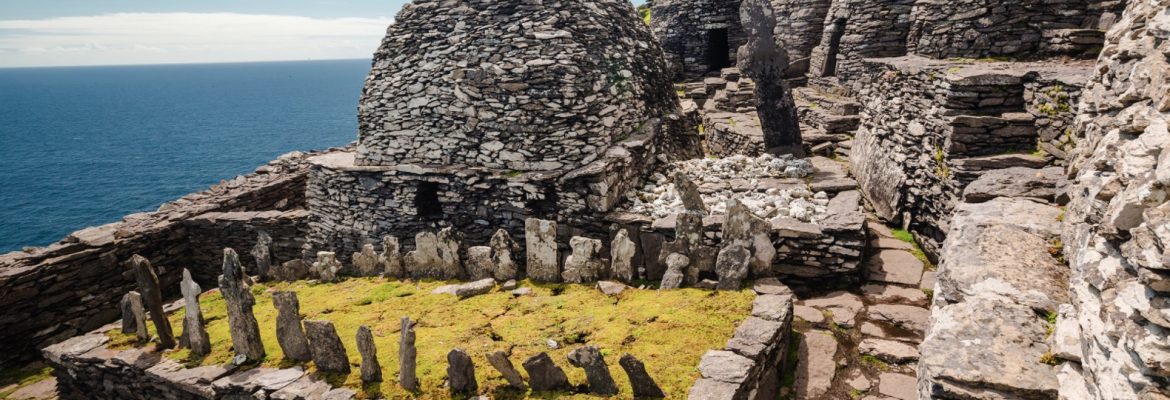Skellig Michael, Ireland
The monastery’s exact date of foundation is not known.The first definite reference to monastic activity on the island is a record of the death of “Suibhini of Skelig” dating from the 8th century; however, Saint Fionán is claimed to have founded the monastery in the 6th century. The monastic site on the island is on a terraced shelf 600 feet (180 metres) above sea level, and developed between the sixth and eighth centuries. It contains six beehive cells, two oratories as well as a number of stone crosses and slabs. It also contains a later medieval church. The cells and oratories are all of dry-built corbel construction. A carefully designed system for collecting and purifying water in cisterns was developed. It has been estimated that no more than twelve monks and an abbot lived here at any one time. A hermitage is on the south peak.
The diet of monks living on the North Atlantic islands was somewhat different from that of those who lived on the mainland. With less arable land available to grow grain, vegetable gardens became an important part of monastic life. Of necessity, fish and the meat and eggs of birds nesting on the islands became staples. The “Annals of Inisfallen” record a Viking attack in 823. The site had been dedicated to Saint Michael by at least 1044 (when the death of “Aedh of Scelic-Mhichí” is recorded). However, this dedication may have occurred as early as 950, around which time a new church was added to the monastery (typically done to celebrate a consecration) which was called Saint Michael’s Church.
The monastery remained continuously occupied until the 12th or 13th century.[2] During this time, the climate around Skellig Michael became colder and more prone to storms, and this, along with changes to the structure of the Irish Church, prompted the community to abandon the island and move to the abbey in Ballinskelligs.


